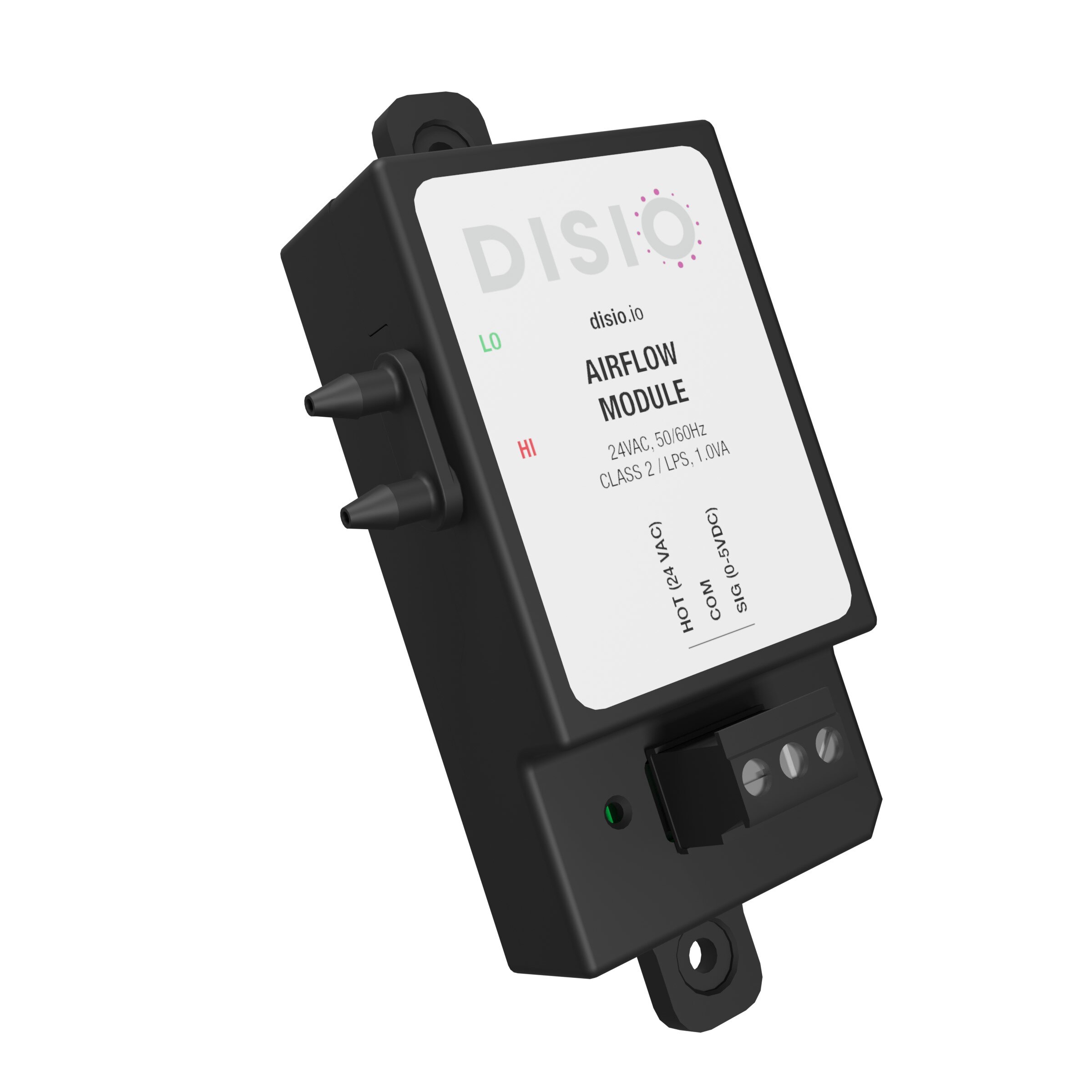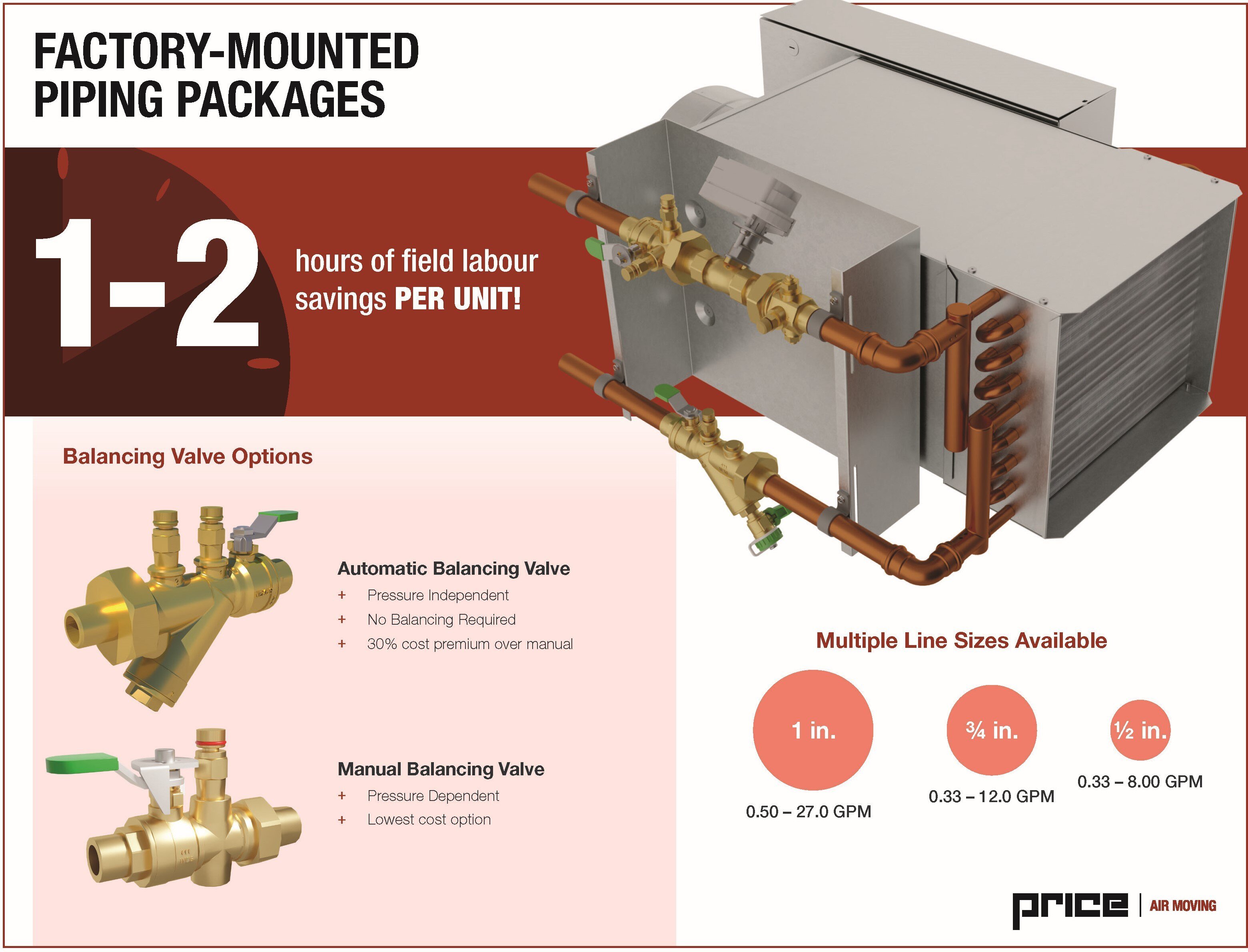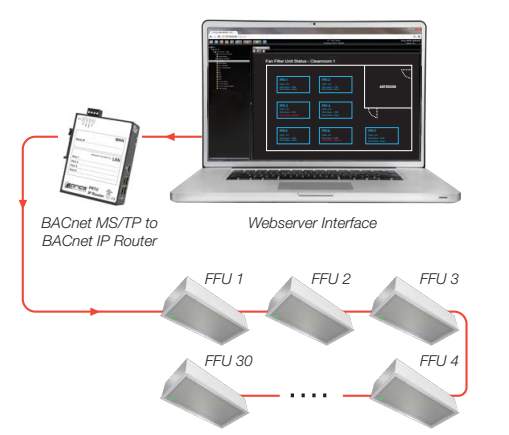A Look at How This Important Device Works in the HVAC Industry
In the world of HVAC, an airflow transducer is a device that converts an airflow signal into an electronic signal for a VAV controller to regulate a damper and provide airflow to a space.
Read More
Topics:
Static Pressure,
Terminals,
Controls,
Thermal Comfort,
HVAC Fundamentals,
HVAC,
Engineering,
Design Engineering,
Tech Tip
The Efficiency Advantage of Factory-Mounted Piping Packages
Single-duct VAV systems are one of the most prevalent commercial HVAC systems in North America. Traditionally, their installation is labor intensive, requiring on-site assembly of various components. Preconstruction practices are simplifying this reality, and the biggest game changer is factory-mounted hydronic piping packages.
Read More
Topics:
Terminals,
HVAC Fundamentals,
HVAC,
Engineering,
Tech Tip
A Legacy Elevated for Comfort and Efficiency
A single-duct system is an HVAC configuration that divides a commercial building into multiple zones, each with its own temperature control. This enhances occupant comfort, ensures the zones are provided with the correct volume of outdoor air for ventilation and allows the total building to operate efficiently.
Read More
Topics:
Terminals,
Controls,
HVAC Fundamentals,
HVAC,
Engineering,
Design Engineering,
Tech Tip
BACnet and Networking Strategies for Cleanroom Efficiency
In the meticulous realm of cleanroom environments, controlling air quality is paramount. Price Industries’ Fan Filter Units (FFUs) offer a comprehensive array of control options for permanent split capacitor (PSC) and electronically commutated (EC) motors to ensure optimal performance, efficiency and convenience.
Read More
Topics:
Controls,
HVAC Fundamentals,
HVAC,
Engineering,
Design Engineering,
Tech Tip,
Critical Environments
Four Approaches for a Quieter System
There is a misconception that VAV diffusers are noisy, but a review of their performance data shows that they have a pressure versus noise relationship similar to that of all diffusers. The difference is that VAV diffusers have a built-in VAV damper and can close to a minimum, possibly building up pressure in the system. It is the higher pressure that makes diffusers noisy, and because of this, a method of pressure control should be used in every VAV diffuser system.
Read More
Topics:
Diffusers,
Pressure Drop,
HVAC Fundamentals,
HVAC,
Engineering,
Design Engineering,
Tech Tip







